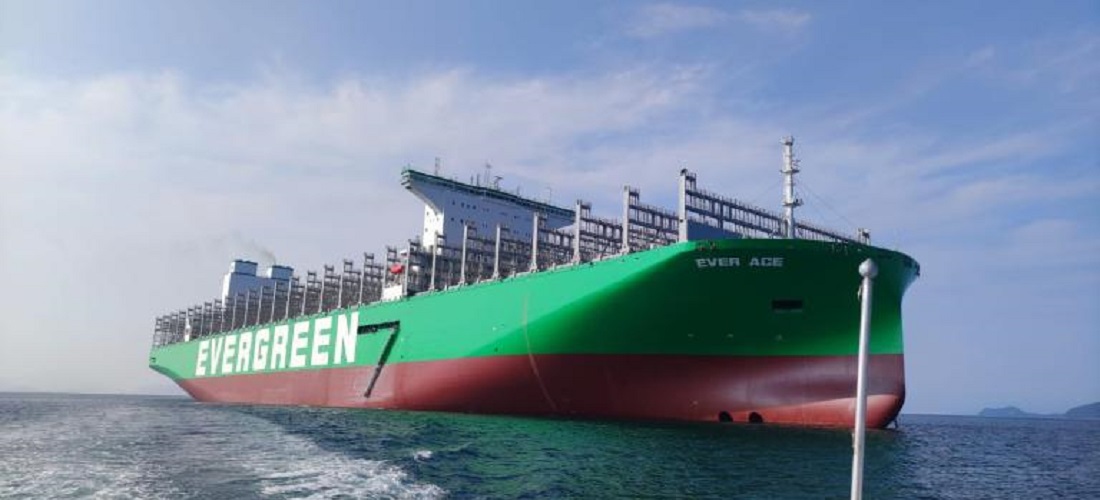
Mega containerships may be reaching size limit accommodated by ports
Jul, 21, 2022 Posted by Gabriel MalheirosWeek
In view of the need to expand cargo handling capacity, the international port scenario is progressively experiencing an unfettered increase in the size of vessels. However, the passage of these mega containerships is hampered by the size limit imposed by the infrastructure required for operations to be carried out safely. As a result, the port industry is concerned about the size expansion of vessels in the coming years.
The size of mega container ships has grown increasingly in recent years due to the need to expand cargo handling capacity. The most recent vessel to break the record was the Ever Ace, which left the port of Yantian in China on August 14, 2021. Since then, no other ship has been able to beat its capacity, equivalent to 21,710 6-meter (20-foot) containers, but companies are already looking to expand those numbers.
Although the Ever Ace is currently the international navigation leader in its segments, there are dozens of box ships being built that promise to inaugurate a new era in terms of capacity.
Only two of these mega-ships stacked vertically would almost reach the height of the world’s tallest building, the Burj Khalifa in Dubai. The largest mega-ships of this sort are typically 400 meters long and 60 meters wide.
However, the growth limit of these vessels may be approaching since the port sector may be able to handle larger container ships because these vessels necessitate high-quality infrastructure to ensure safety standards. Therefore, expanding capacity requires an increase in structural investments.
Currently, more than 5,500 mega container carriers are spread across ports, with the capacity to carry 25 million TEUs.
According to S&P Global Commodity Insights, new vessel orders will expand capacity by up to 25% over the next few years. During the last decade, the cargo capacity on these ships grew from less than 3,000 to around 4,500 TEUs, and with the market’s growth, these numbers tend to increase even further.
However, in order for this to become true, international ports will have to invest in infrastructure expansion to accommodate the passage of larger vessels. As a result, investing so much cash solely to increase cargo transport capacity may be unfeasible.
Therefore, new builds may be limited to 400 meters in length and about 60 meters in width, so there is no need to alter the ports’ layout entirely.
George Griffiths, a global container market editor at S&P Global Commodity Insights, confirmed that the port industry might be approaching the size limit of containerships. He also asked the following question to support this thesis: “Why would you invest in bigger ships if, for that, you would also have to invest huge amounts of money in ports?”.
Source: Click Petróleo e Gás
To read the full original article, please go to: https://clickpetroleoegas.com.br/infraestrutura-dos-portos-para-atender-a-navegacao-de-meganavios-porta-conteineres-esta-chegando-ao-limite/
-
Shipping
Apr, 28, 2025
0
Norcoast Appoints Márcio Salmi as New Commercial Director
-
Other Cargo
Aug, 24, 2023
0
Suzano, Klabin see timber shortage in Brazil, worldwide
-
Shipping
Dec, 10, 2020
0
Court upholds vessel-sharing agreement between Maersk and MSC for container shipping
-
Ports and Terminals
Feb, 26, 2021
0
Port of Imbituba inaugurates 6400m² iron-ore warehouse

